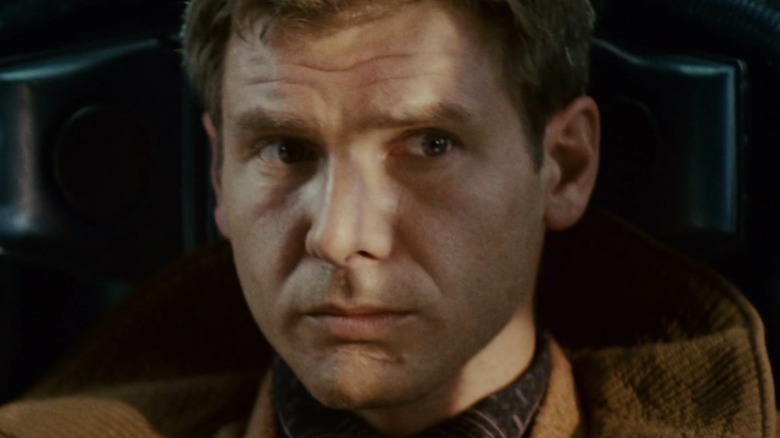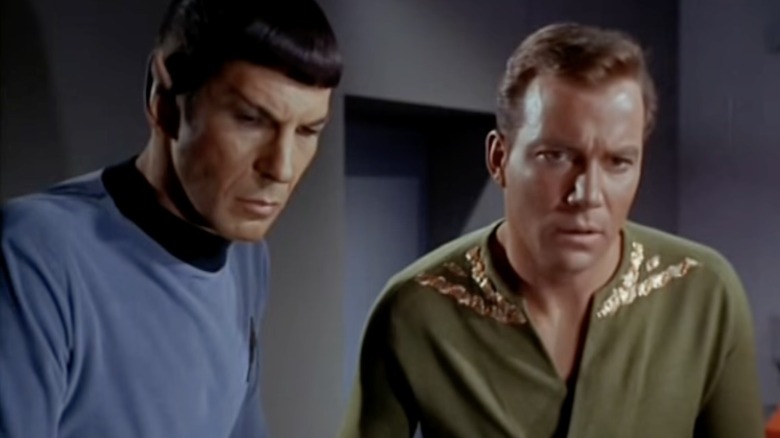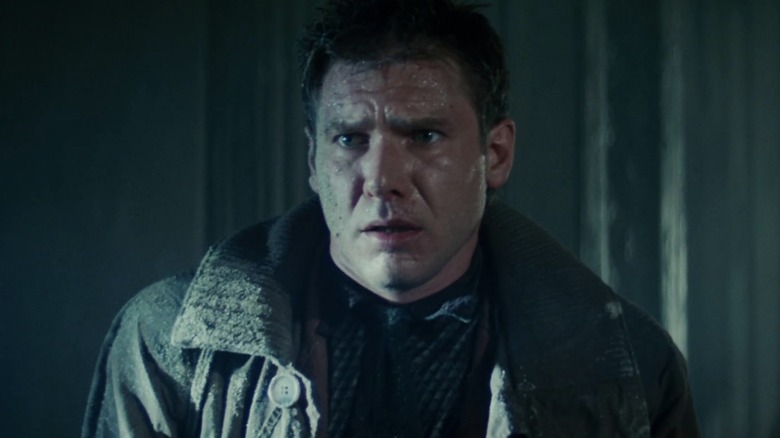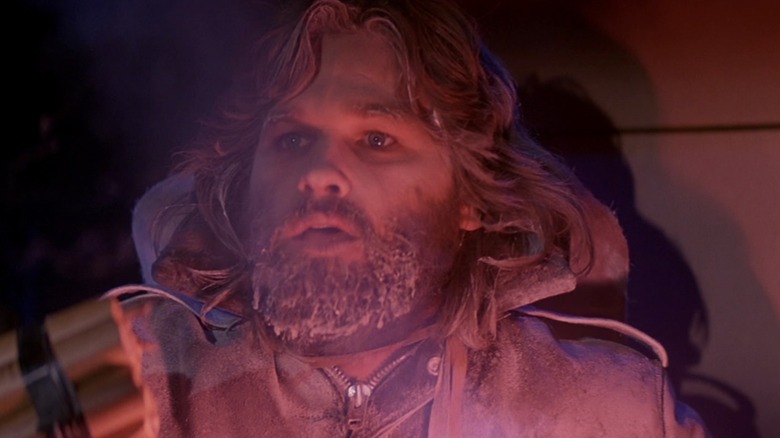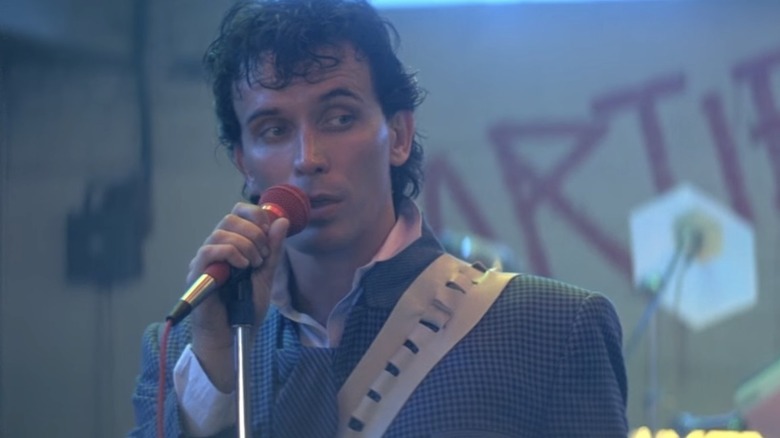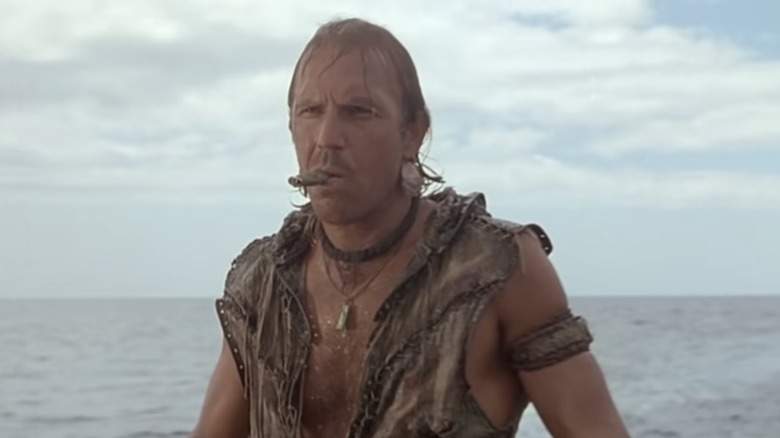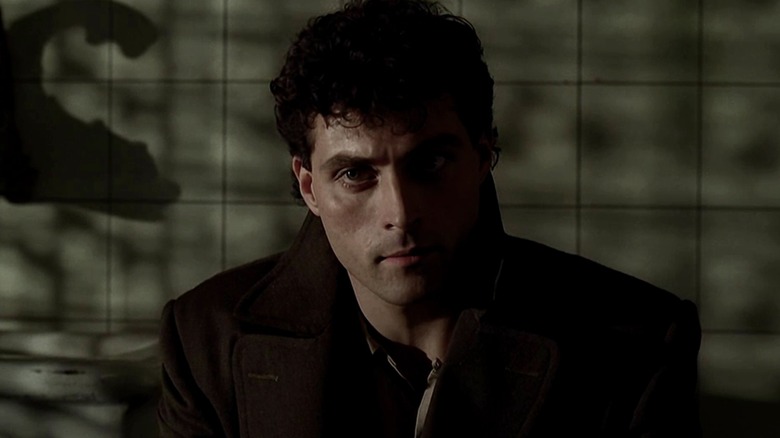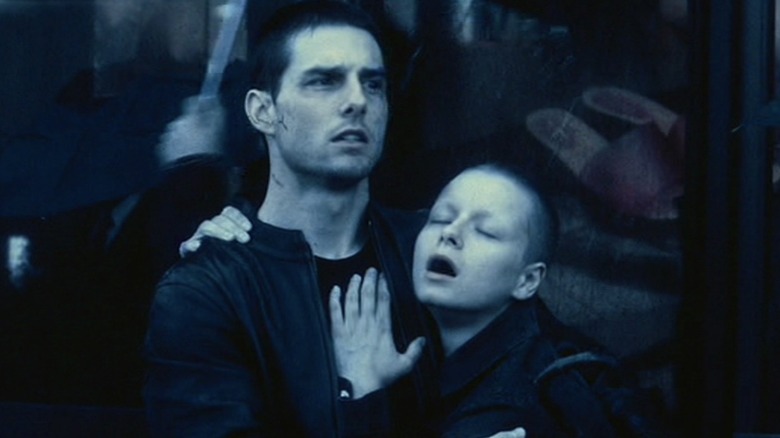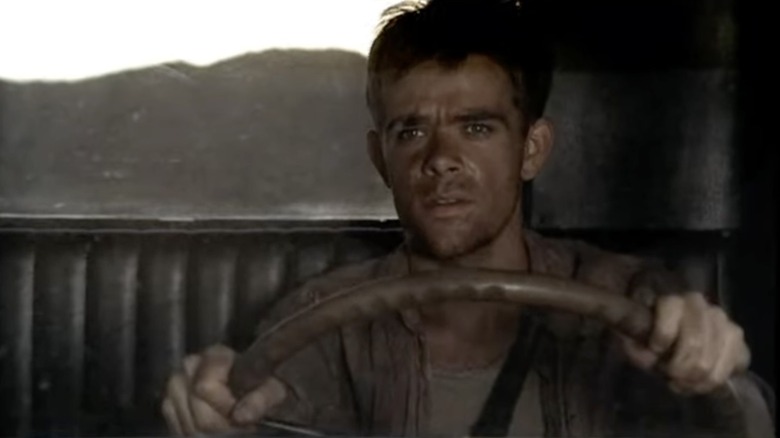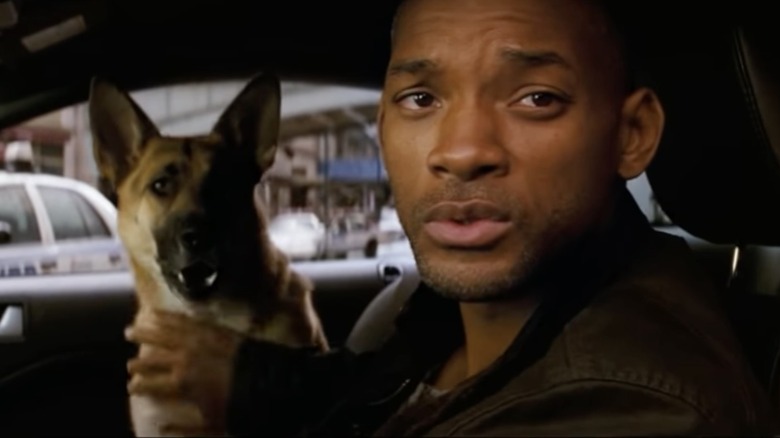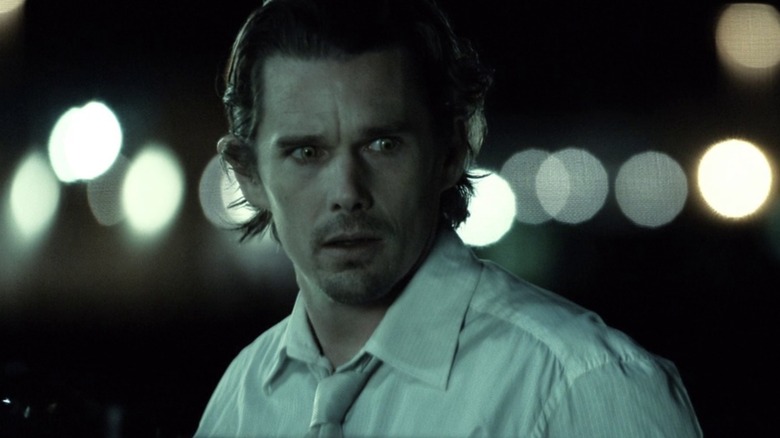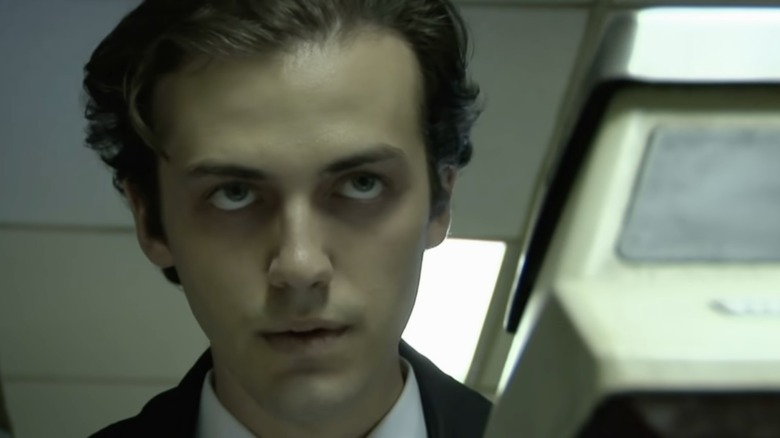Roles That Would Have Worked Out Better If They Cast A Woman Instead
According to a study conducted between 2014 and 2017 by Creative Artists Agency (CAA) and Shift7 Found Films, movies with female lead characters outperformed films with a male lead at the box office; films passing the Bechdel Test, meanwhile, performed better than those who did not.
"The perception that it's not good business to have female leads is not true," said CAA agent Christy Haubegger, in response to the study. "They're a marketing asset."
Despite such persuasive facts, according to another study conducted by The Center for the Study of Women in Television and Film at San Diego State University, there remain considerably fewer substantial and leading roles for women. A staggering 85 percent of films in 2021 had more male characters than females, with 31 percent featuring a lone female protagonist.
Looking back through film and TV history with this information, it makes you wonder whether more open-minded executives couldn't have made content that was not only higher-grossing, but perhaps better. With than in mind, here are several iconic roles that perhaps could have been better filled by a woman.
Captain Kirk, Star Trek (1966–1969)
Considering the egalitarian world of Starfleet, one would think a woman could be captain of the U.S.S. Enterprise. William Shatner's Captain Kirk is iconic, but it would have been revolutionary if the part had been a woman.
Producers considered casting a female as the first officer on the Enterprise. Nichelle Nichols (who played Lt. Uhura) auditioned for the part, but ultimately producers nixed Number One, a logical and unemotional female officer, opting to cast Leonard Nimoy instead as Spock, advancing the character to First Officer (per Gizmodo).
Not casting a woman as Captain Kirk says more about television executives in the late '60s than it does about series creator Gene Roddenberry. Considering the pilot was financed by none other than Lucille Ball, one might have thought casting a woman as Captain Kirk was a possibility, but Roddenberry had execs to contend with. Roddenberry chose his battles wisely, taking satisfaction in making a groundbreaking series featuring an inclusive cast with Nichols and George Takei as central characters (per Gizmodo).
Roddenberry pushed for "Trek" to be groundbreaking. The show aired the first interracial kiss on the lips on network television, boldly going where none had gone before. No doubt "Star Trek" was groundbreaking, taking television into the stars and beyond, but having a female Captain Kirk would have made a huge statement about gender equality.
As it turned out, Trekkies wouldn't get a female Starfleet Captain as a show lead until Janeway hit screens in "Star Trek: Voyager" in 1995, nearly 30 years after the original series captured the popular imagination. In a male-dominated genre, it's amazing to consider how different science fiction would be if not for Mary Shelley and Lucille Ball.
Rick Deckard, Blade Runner (1982)
"Blade Runner" was a box office bomb upon its debut but has since become an iconic neo-noir/sci-fi flick. Harrison Ford gave a performance nothing short of iconic as Rick Deckard, a blade runner hunting dangerous replicants on the run.
But wouldn't it have been a more intriguing film if Deckard had been a woman? A female blade runner could have harnessed and subverted expectations of the noir femme fatale archetype, using feminine wiles to investigate under the radar. Perhaps she could have also further clouded the pivotal question of whether Deckard was a replicant via themes like maternity.
"The trope's flexibility has meant that the femme fatale is equally apt for conveying the blatantly misogynistic message of classic noir," says Lindsay Mitchell, a Harvard creative writing teacher who finds such possibilities intriguing, "as well as the mixed or supportive messages on female empowerment that sometimes appear in neo-noir."
Consider this: a same-sex relationship between a female Deckard and Rachael (Sean Young) would have played into this notion of Deckard as a protagonist femme fatale, responsible for Rachael's downfall as she learns of her replicant origins.
MacReady, The Thing (1982)
John Carpenter's "The Thing" was another flop at the box office that became a cult classic and is now regarded as a sci-fi/horror masterpiece. It is also a film that has zero female characters. Indeed, the only female voice in the film is a computer playing chess against MacReady in the opening scene.
While some might argue that the remote location (a U.S. research station in Antarctica) is a valid argument for an all-male cast, there were plenty of women in science in the '70s and '80s. Kurt Russell is legendary in the film, but imagine if MacReady was played by a woman.
True, there weren't many female helicopter pilots with a military background in the early '80s, but this is sci-fi; having a woman warning everyone that something is amiss would have totally changed the film, and would explain why Mac was the only one with their own shack away from the research station. It could also give the film a decidedly Ripley-in-"Alien" vibe, which wouldn't necessarily be a bad thing.
Which might be why Carpenter didn't cast a woman in the MacReady role, fearing audiences would write it off as an "Alien" knockoff. "The Thing" with its original cast was excellent, but throwing a woman into the mix, especially as MacReady, could have given the film more complex interpersonal dynamics to explore. Mac's paranoia would have been multiplied by being the only woman in the wilderness, with a group of men breaking under the pressure. A female MacReady could have tackled perceived notions of those who think women are the overly emotional ones, perhaps demonstrating them as being better suited to maintain a cool head in a crisis.
Buckaroo Banzai, The Adventures of Buckaroo Banzai Across the 8th Dimension (1984)
"Buckaroo Banzai" was another miss at the box office, partly because 20th Century Fox didn't know what to do with the movie. They tried to market it as a cult classic in the making, something the off-beat audiences that actually make films a cult classic probably didn't appreciate (per Peter Sobczynski). But selective audiences took a shine to the film, ultimately bestowing this quirky sci-fi/adventure parody a cult classic status, with favorable scores on Metacritic. As fun and whimsical as this film is, having Ellen Barkin's Penny Pretty as the only female speaking part in the film makes it feel like a boy's club, which can be off-putting for female audiences.
If a woman played Buckaroo Banzai instead of Peter Weller, the film would have an entirely different vibe. Maybe a female rock star/scientist/hero would have actually appealed to wider audiences, rather than just the self-proclaimed weirdos and nerds who loved this charmingly bizarre film. Buckaroo Banzai is already a unique hero, in the sense that he uses his mind and his sensitivity to navigate the world rather than his brawn to solve problems or advise the President about interstellar wars brewing in our galaxy.
An androgynous actress could have rocked Buckaroo Banzai's '80s suits and skinny ties just as effectively as Weller. It would have been powerful (and unique) to see a group of adventurous men rallying around a female Banzai. It also could have been meaningful to see a group of men respecting her intelligence and looking to her for leadership.
Mariner, Waterworld (1995)
Kevin Reynold's "Waterworld" was a misfire of massive proportions, the kind that spent the next several years as a Hollywood punchline. Could it have been salvaged by a female playing a mutated loner with gills?
One of the film's many shortcomings was an awkward, quasi-love story between Costner's Mariner and Helen (Jeanne Tripplehorn), which simply didn't work. Toss that aside and start anew, either making it a same sex romance or re-casting the Tripplehorn role with a male, and perhaps that chemistry could work. It certainly couldn't be much worse.
Seeing two women work together to get a child, Enola (Tina Majorino) to the safety of dry land may have been a much more interesting, emotionally resonant film than the flopping fish that hit theaters. "Waterworld" could have been about sisterhood and the strength women get from community in a world dominated by desperate men and ruthless pirates. With a female Mariner, it might have been a film about a reluctant heroine with the courage to trust and help others despite fears of judgment, rather than an aloof story about an embittered loner who only helps others because he feels there is no other option.
John Murdoch, Dark City (1998)
"Dark City" barely earned back its production budget, despite getting kudos from critics and being one of only a handful of films that were so beloved by Roger Ebert that he recorded an audio commentary walking viewers through every scene of the film. But could it have fared better at the box office with a leading lady in the Rufus Sewell role?
Why does the reluctant anti-hero always have to be a man? A female Murdoch could have played into the noir cliches similar to what "Blade Runner" could have done, leading the audience to believe she her femme fatale tendencies may have indeed led to a string of murders. Considering that the Strangers, aliens who created the world of "Dark City" to experiment on humans hoping to discover the essence of the resilient human spirit, are all men, it would have been interesting to have the hero played by someone of a different gender.
The film's themes suggest humans have more power in our lives than we might think. Having a woman possess the ability to alter her environment, literally manifesting the world she wants to live in, would have been a powerful and surprising message for a science fiction film in 1998. What could her world have looked like?
As writer Molly Flatt, said, "Science fiction is famously male-dominated, both in its writers and its readers. It's also famously rubbish at offering nuanced female characters." But science fiction is a genre ripe for giving voice to traditionally marginalized groups. By casting a male lead, "Dark City" missed an opportunity to embrace the subversive, rebellious power of science fiction and this story.
Chief John Anderton, Minority Report (2002)
Despite having good scores on Rotten Tomatoes and doing great at the box office, Tom Cruise just didn't feel right for the role of Chief John Anderton in Spielberg's "Minority Report." Yes, Anderton was a man in Philip K. Dick's short story, but he was also fat and balding. The film changed things significantly, giving Anderton a murdered child backstory and a personal investment in the pre-crime technology used to eliminate murders in a futuristic Washington, D.C.
Since they changed the source material, why not make Anderton a woman? Wouldn't the mother of a murdered child be just as blinded to the ethical quandaries of precognition by her despair? Doesn't it make more sense for the technology of pre-crime to be brought down by someone in the system that is seen as an outsider? It is unimaginative (and perhaps, more than a little sexist) for writers and directors of science fiction to still be imagining a future where gender norms in careers aren't any different from our own.
In Spielberg's "Minority Report" Anderton's assistant Casey (Anna Maria Horsford) is played by a woman of color, but everyone else in the pre-crime division, except for the Precog Agatha (Samantha Morton), is a man. This highlights a disparity between male and female lead characters in film and television that still exists some twenty years after they made this film.
When a "Minority Report" series came out in 2015, Meagan Good took over as the star. The series didn't do very well ratings-wise, and was soon canceled — but nevertheless, it seems like others also believe that a stronger "Report" could be built around a woman.
Ben Hawkins, Carnivàle (2003-2005)
HBO has pumped out high-quality original series for years. When "Carnivàle" premiered, it seemed destined for greatness, winning five Emmys out of the gate, garnering positive reviews, and a solid fan base. Sadly, the fascinating series lost its audience after Season 1 concluded, limping through Season 2 before being canceled. But, if they had cast Ben Hawkins with a woman instead of Nick Stahl, this fascinating and influential series might have been even more interesting.
With a female Hawkins, the show wouldn't just have a battle brewing between good and evil as the awesome introduction of the series sets up. It could have explored the patriarchy pitted against the matriarchy. "Carnivàle" could have had plotlines based around Christianity and the church of men, stamping out pagan nature religions and the divine feminine. Having Hawkins' opponent in the brewing battle between good and evil represented by Brother Justin Crowe (Clancy Brown), a charismatic but frightening preacher, already set up this dynamic – so, why couldn't HBO run with it by casting a woman in Hawkins' role?
Of course, networks and studios still are still hesitant to place the fate of an entire series on the shoulders of a woman, but the suggestion that female-led entertainment is no longer a financial risk suggests HBO's supernatural period drama "Carnivàle" could be begging for a female-led reboot.
Robert Neville, I Am Legend (2007)
"I Am Legend" did great at the box office, but isn't necessarily fondly recalled all these years later, and devotees of Richard Matheson's novel felt it wasn't necessarily true to its messages (per Den of Geek).
If the filmmakers are going to so drastically switch up the story, adding new characters like Anna (Alice Braga) and her son Ethan (Charlie Tahan) and changing the ending, why not show this deserted post-apocalyptic New York through the eyes of a female scientist?
Would she have been more observant, realizing the infected retained a social order and weren't just monsters? Would she have practiced more ethical experiments while searching for a cure to the virus, possibly even working with the infected? If you are unfamiliar with the novel, Robert Neville is not a legend in a good way at the end of the dystopian 1954 vampire story. In fact, he is more infamous than legendary. A boogie man for the infected to tell their children about. Neville was a Dr. Frankenstein for future generations to fear.
The alternate ending of the director's cut is truer to the spirit of Matheson's novel, despite still being an entirely different story. This alternate ending suggests Neville is the monster in the Darkseeker's eyes. This alternate ending reveals the infected aren't monsters. They have kept a social order and the ability to love despite the mutations from the virus, giving them a monstrous appearance. This ending is better, but it also makes you wish for a new adaptation of the novel, one truer to the original story while featuring a fierce female lead.
Edward Dalton, Daybreakers (2009)
"Daybreakers" is a sci-fi/horror hybrid, set in a not-so-distant future after a virus has turned most of the world population into vampires. A female lead could have flipped the script from routine thriller to boundary-breaking potboiler.
In the film, there is still a capitalistic and militaristic social order, but as fresh human blood supply dwindles, the hold on society is tenuous. Edward Dalton (Ethan Hawke) is a scientist who has sworn off human blood while working on a synthetic blood supply for a corporation that farms the remaining humans. When Dalton is approached by a band of rogue humans led by Lionel "Elvis" Cormac (Willem Dafoe), who claims to have been cured of vampirism, they recruit Dalton to recreate the conditions that restored Elvis' humanity.
This dystopian film was a moderate success. It turned a profit and has respectable critic scores on Rotten Tomatoes, but didn't fare well with audiences. It's intriguing to think that if a woman played Dalton, the story would have a different dynamic that could have made the film more popular. "Daybreakers" wields a fascinating concept, one that delivers a visually stylish sci-fi/horror mash-up, but the film was a missed opportunity to place a woman at the center of the story.
Jacob, Midnight Son (2011)
The indie film "Midnight Son" has great critical scores on Rotten Tomatoes, but it is inarguably obscure. Perhaps a change-up in casting could have made it more palatable to a wide audience.
The story follows Jacob (Zak Kilberg), a young man forced to live a lonely existence because of a rare disease. He is unbearably anemic, and the sun burns his skin, leaving unsightly scars. Jacob is a painter who works the night shift as a security officer at an office building in Los Angeles. While out at a bar one night, he meets a woman named Mary (Maya Parish) and awkwardly courts her, but his escalating health issues create a barrier between them.
After Jacob discovers drinking animal blood makes him feel better, he turns to human blood, in essence becoming a vampire. He continues to court Mary but is afraid he might hurt her as his bloodlust grows. Jacob's transformation is an internal struggle against his very nature. A woman could have easily played Jacob, making the narrative more complex. A female in this role might have relished the power and strength gained by becoming a vampire after years of being told they were frail, weak, and sick.
A woman forced to live at night (a time many women feel especially vulnerable), suddenly becoming the predator instead of the prey, could have given this thoughtful horror flick a whole different vibe, possibly leading the main character down different roads as she embraces her dark nature and cravings for blood. As a horror film, "Midnight Son" does flirt with the gruesome, but it is more of a character study than a gore fest. A female lead might have delivered both the horror and heart of this film in a more marketable package.
